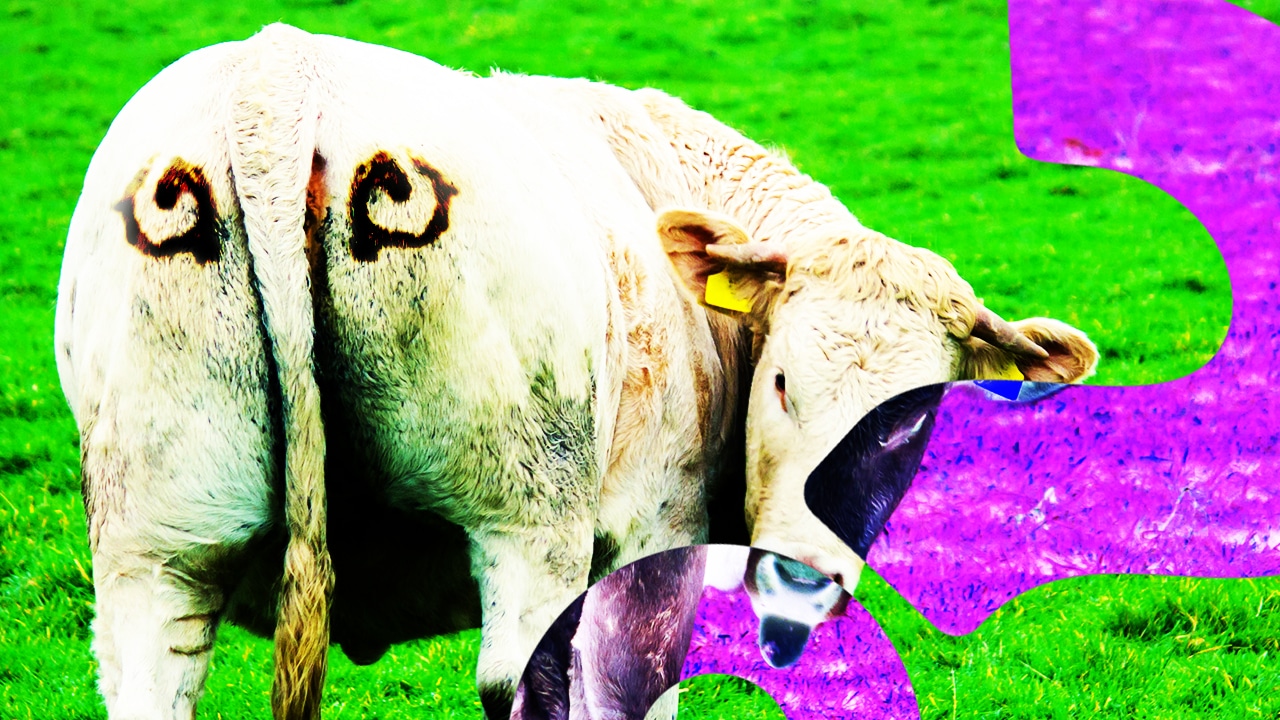What happens when you paint a pair of eyes on a cow’s butt? The answer: a cost-effective approach to scare predators away.
In a recent study related to cow protection, researchers in Botswana have found that painting large eyes on cows buts wards off the predators. This new study found an interesting way to keep the cattle safe from predators (wild animals) and predators safe from farmers.
Painting eyes on cow butts might sound like a prank, but it’s actually a clever tactic used by ranchers in South Africa for cow protection to help protect their livestock from lions and other ambush predators. In the wild Okavango Delta World Heritage Site in northern Botswana, keeping cattle is not easy. For more than 10,000 years, ever since man started herding cattle for food and enrichment in Africa, lions have been a huge problem.
The New study on cow protection
In a newly published study, called “i-cow” solution, scientists in Botswana have discovered that painting eyes on the rear ends of cattle might just be the future for predator prevention in the region. The study has been done using 2,061 cows on farms in northern Botswana’s Okavango Delta region based on how predators reacted to cows that sported eyes on their rear end.
The “i-cow” method involves applying acrylic paint on the bums of cattle with foam stencils that look like a sketch of an eye. The eyes trick certain predators, such as lions and leopards, that try to sneak up on livestock, into thinking the animals can see them. Researchers for a period of four years have tracked herds and found that 15 out of the 835 unpainted cows were killed by predators, four of the 543 cattle with “x’s” died, but every single one of the 683 animals with eye doodles survived.
The basic concept used in the technique is simple enough: Lions and leopards are what ecologists call ambush predators, meaning they prefer to sneak up on unwitting prey. The element of surprise is so valuable that if these predators think they’ve been spotted, they will often abandon their hunt entirely, lead researcher Neil Jordan said in a statement.
The man behind the idea of cow protection
New Zealand scientist Dr. Neil Jordan, who is a conservation biologist and lecturer at the University of New South Wales in Australia, is the mastermind behind this amazing method, called the “i-cow” method for cow protection from ambush predators.
He came up with the idea a few years ago when he was based in a village in rural Botswana doing conservation work. Jordan recalls a situation of two lionesses being killed by farmers after preying on their cattle. Given the fact that the African lion is a vulnerable species whose population has shrunk significantly in recent years.
Jordon says, “I was encouraged to find a non-lethal approach that could promote coexistence and how eyes on cows might work because they have been an effective tool in deterring predators from going after certain butterflies, fish, and amphibians.”
A major global conservation challenge:
The predation of livestock by carnivores, and the retaliatory killing of carnivores by farmers, as a result, is a major global conservation challenge. Such human-wildlife conflicts lead to large carnivores declines and ultimately costs the co-existence. The eyes on the cow rumps could offer a more humane alternative to lethal control (shooting the predators), as well as a more ecological way to protect livestock than using costly fencing to separate the cattle from carnivores.
The study even theorises the technique could be used to prevent human-wildlife conflicts and reduce criminal activity. This research is being considered as a new hope for peace between cattle farmers and lions. Protecting cows from wild carnivores and carnivores themselves is an important and complex issue that likely requires the application of a suite of tools, including practical and social interventions.
Interesting to know:
Interestingly, painting eyes on animal butts to scare off predators was an idea used in the children’s story about the character Babar, who used to paint eyes on the hind flanks of elephants to scare off rhinoceroses threatening to attack.
Believe it or not, the scientists found inspiration in the kids’ story or came up with the idea on their own, painting eyes on cow butts could end up helping farmers save both money and time in protecting their cows and livestock.

